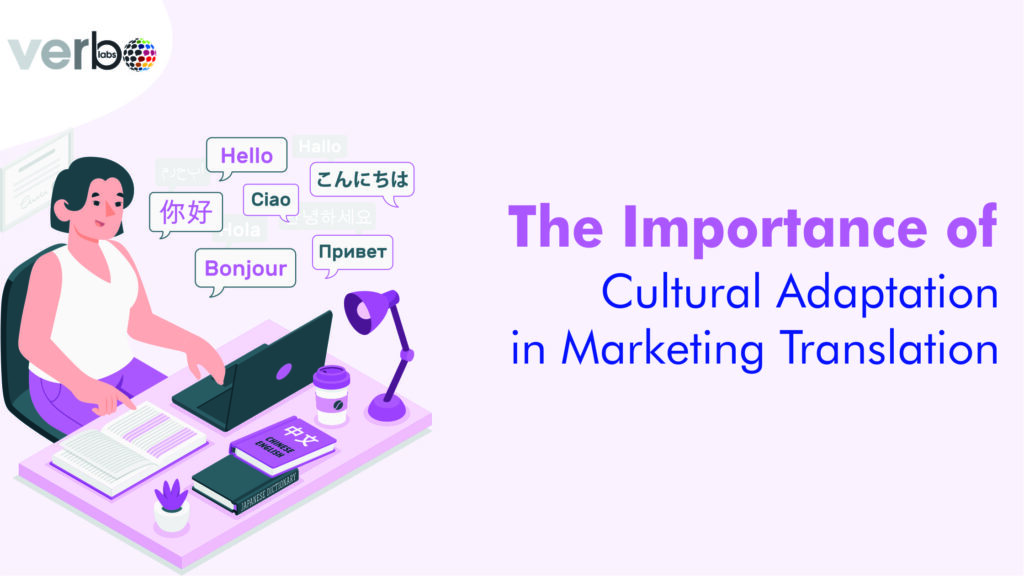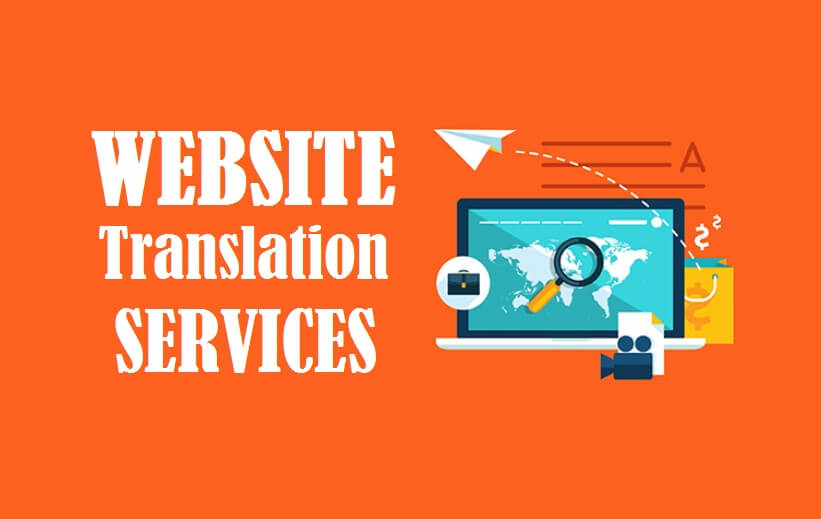A key component of global business interaction is marketing translation which allows businesses to communicate with a range of audiences across many cultures and languages. To engage with the target audience and successfully convey the brand message, cultural sensitivity is essential. A literal translation alone, meanwhile, can often be insufficient to attract attention and connect with people from different cultures. This is where cultural adaptation comes into play, and it is crucial for successful marketing and effective communication. Incorporating cultural nuances, attitudes, beliefs, and preferences into the translated material is crucial to cultural adaptation in marketing translation. It goes beyond the words and concentrates on capturing the message in a form suitable for the target audience’s cultural context. Marketers can create content that effectively communicates the brand message and emotionally engages the audience by considering cultural factors, such as language usage, humor, symbols, colors, and social standards. In marketing translation, cultural adaptation serves two purposes. First, it helps avoid misunderstandings or misinterpretations resulting from a straight translation.
In one culture, certain words, phrases, or ideas may have an impact that is different from another. Cultural adaptation paired with an excellent localization strategy makes sure that the information is suitable for the target audience in terms of both language and culture, removing any potential hurdles to understanding or adoption. For instance, in Pixar’s “Inside Out,” there is a scene where Riley’s dad struggles to feed his daughter broccoli. She is shown to be completely disgusted by the vegetable, refusing to eat it, like most toddlers. This was set in America; however, Pixar replaced broccoli with bell peppers in Japan’s version of the film. They considered the nuances of “foods that toddlers hate” and understood that Japanese kids don’t really hate broccoli but bell peppers. This accurately represents why cultural adaptation is crucial.
Understanding Cultural Adaptation in Marketing Translation
Cultural adaptation is essential to marketing translation to communicate with and appeal to different target audiences. This involves considering and embracing cultural differences, beliefs, and traditions. It involves more than just language accuracy; it includes tailoring the information to fit the audience’s cultural background. Understanding that many cultures have distinctive tastes, worldviews, and sensibilities is crucial when translating marketing materials. Businesses could create content that attracts the target audience directly and encourages a stronger connection owing to their cultural sensitivity.
Neglecting cultural adaptation in marketing translation can lead to significant pitfalls. Marketing messages may seem irrelevant, unclear, or even offensive to the target audience if cultural differences are not taken into account. Such misunderstandings can undermine a brand’s reputation, obstruct market expansion, and lead to missed opportunities. By adopting cultural adaptation, marketers should create content that resonates with their target markets’ cultural beliefs and goals. It shows respect for the community’s culture, improving brand reputation and raising the possibility of higher audience engagement.
Enhancing Message Relevance
Language nuances, idioms, and colloquialisms vary across cultures, and their impact on message effectiveness must be noticed. A literal translation may lead to misunderstandings or loss of intended meaning. A good localization strategy allows marketers to adapt their messages to reflect local language usage, idiomatic expressions, and colloquialisms. This ensures that the message not only communicates the intended information but also captures the attention and interest of the audience in a way that feels familiar and relatable. Successful examples of cultural adaptations in marketing campaigns abound. For instance, McDonald’s “I’m lovin’ it” slogan was adapted to “Me encanta” in Spanish-speaking countries, effectively capturing the essence of the original slogan while resonating with the local audience. Coca-Cola’s “Thanda Matlab Coca Cola” (“thanda” refers to “cold”, which in the Indian context means a cold drink) campaign in 2002 to cement itself in the Indian market that was still used to other local beverages. They completely changed the game by making their brand the “thanda” that Indians needed. This adaptation successfully maintained the brand’s message while incorporating the cultural context of Hindi-speaking audiences.
These examples demonstrate the importance of cultural adaptation in enhancing message relevance. By adopting marketing messages to specific cultures and considering the language and cultural preferences, brands can effectively communicate their values and connect with diverse audiences on a deeper level.
Building Trust and Credibility
Building trust and credibility with consumers requires cultural sensitivity in translation. It shows a commitment to understanding and valuing the target audience’s beliefs and preferences when marketing materials are translated and adjusted to match their cultural context. Proving that the company is prepared to move beyond a one-size-fits-all strategy and adapt its messaging to resonate with the local culture promotes trust. Brands that make an effort to tailor their content to ensure it is meaningful to their target audience are more likely to gain the confidence and engagement of customers.
Another crucial element for connecting with the target audience is localized content. Companies can meet consumers’ specific requirements, interests, and desires by producing content tailored to the local market. This localized strategy promotes credibility and confidence and makes consumers feel seen and understood. It demonstrates that the business cares about meeting customers’ distinctive preferences and is not just pushing a general message.
Using culturally appropriate images, symbols, and references in marketing communications can also considerably improve trust and credibility in addition to language and content. A sense of connection and authenticity is created using imagery that the target audience can identify with and relate to. Brands may show that they understand the visual language of consumers.
Overcoming Language Barriers
Translation challenges caused by language barriers make it difficult to communicate successfully with different audiences. Literal translations frequently miss the mark in capturing the real meaning of the brand message, leading to misinformation. However, these linguistic gaps can be closed by using cultural adaptation strategies, allowing for more effective communication. Cultural adaptation enables marketing materials to be both linguistically and culturally authentic. Working with experienced translators who understand the source’s and target languages’ unique cultural characteristics is crucial for successfully overcoming language barriers.
These translators are competent at preserving the intricacies of the original message while appropriately shaping it for the target demographic. They can navigate the challenges of language barriers and effectively communicate the brand message since they are linguistically and culturally aware.
Companies can overcome these obstacles and promote good communication using a strong localization strategy and experienced translators. By ensuring that marketing messages connect with the target audience on a cultural level, brands are more successful in various marketplaces.
The Role of Research and Localization
Researching the target culture in-depth is essential when translating marketing materials for audiences worldwide. Understanding the values and preferences of the target audience is crucial before beginning the translation process. The research establishes the groundwork for successful localization and ensures that the translated content will appeal to the local audience.
Working with localization specialists who are well-versed in the language and cultural setting is essential. These experts have the knowledge and skills to alter the material to align with the target audience’s cultural norms and expectations. They may aid in avoiding cultural mistakes and make sure the translated materials effectively and appropriately convey the business idea.
Effective localization methods go beyond simple word translation. It means changing the text to fit the language and tone of the target culture. Throughout the localization process, uniformity and efficiency can be maintained using tools like terminology databases and translation memory systems.
Artificial intelligence and machine translation can help with the initial translation process, but human skills and engagement are still necessary to ensure cultural accuracy and contextual understanding.
Conclusion
The ability of businesses to interact successfully with many different audiences across cultural divides is made possible by cultural adaptation. In addition to understanding and incorporating cultural specifics, beliefs, and preferences into the text, cultural adaptation extends beyond literal translation. By doing this, marketers can prevent confusion, emote with the audience, and build closer consumer bonds. Effective communication depends on being able to recognize and understand these cultural differences. Marketers can modify their messages to connect with the target audience in greater depth by acknowledging and embracing the unique features of each culture. In addition to improving comprehension, this promotes credibility, trust, and brand loyalty. The major components of this approach include working with localization experts and conducting in-depth research on the target culture. Businesses can get around language obstacles, interact honestly with their global audience, and succeed in various markets by devoting time and money to cultural adaptation. Cultural adaptability in marketing translation is more crucial than ever in today’s interconnected world.



